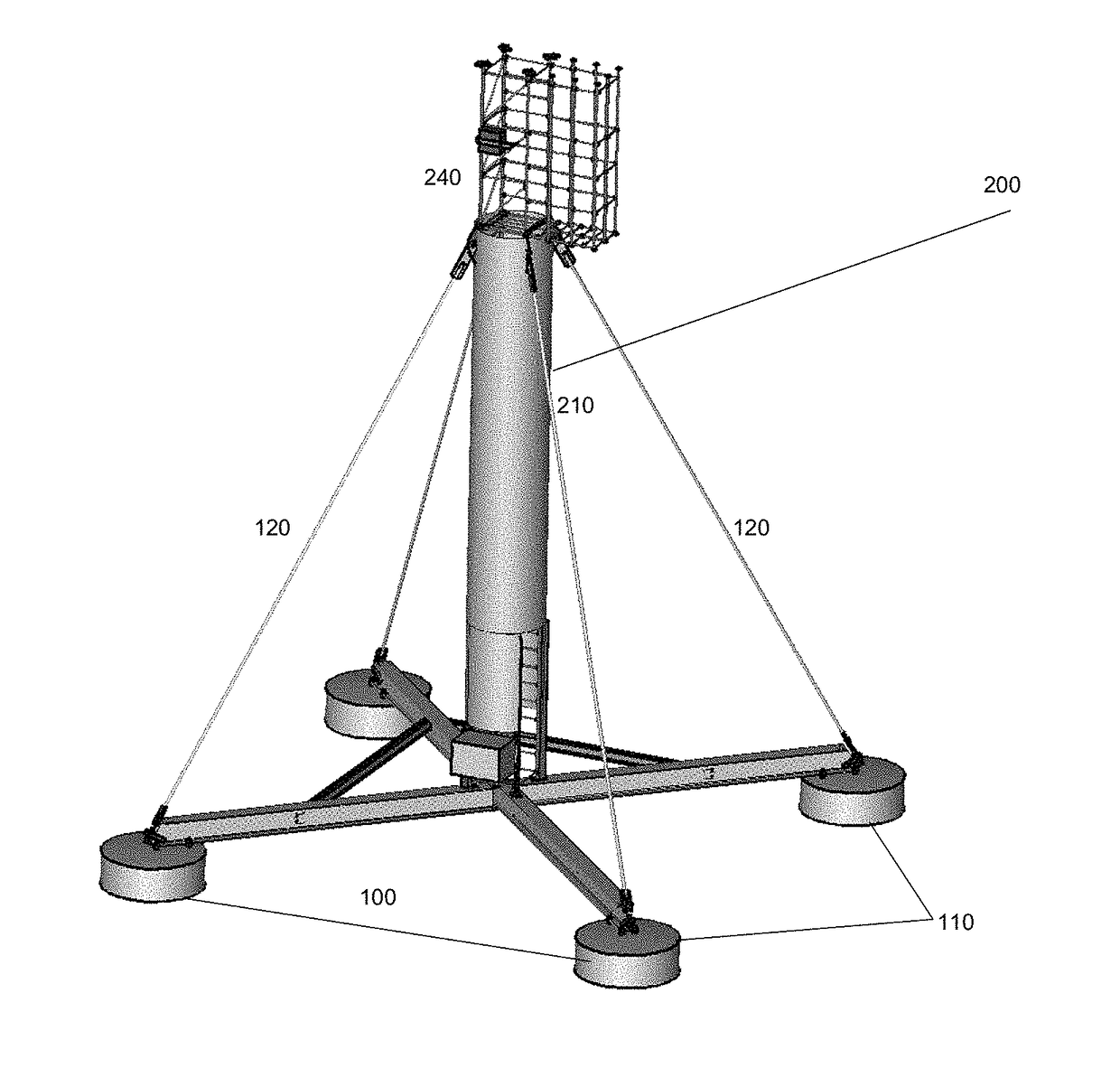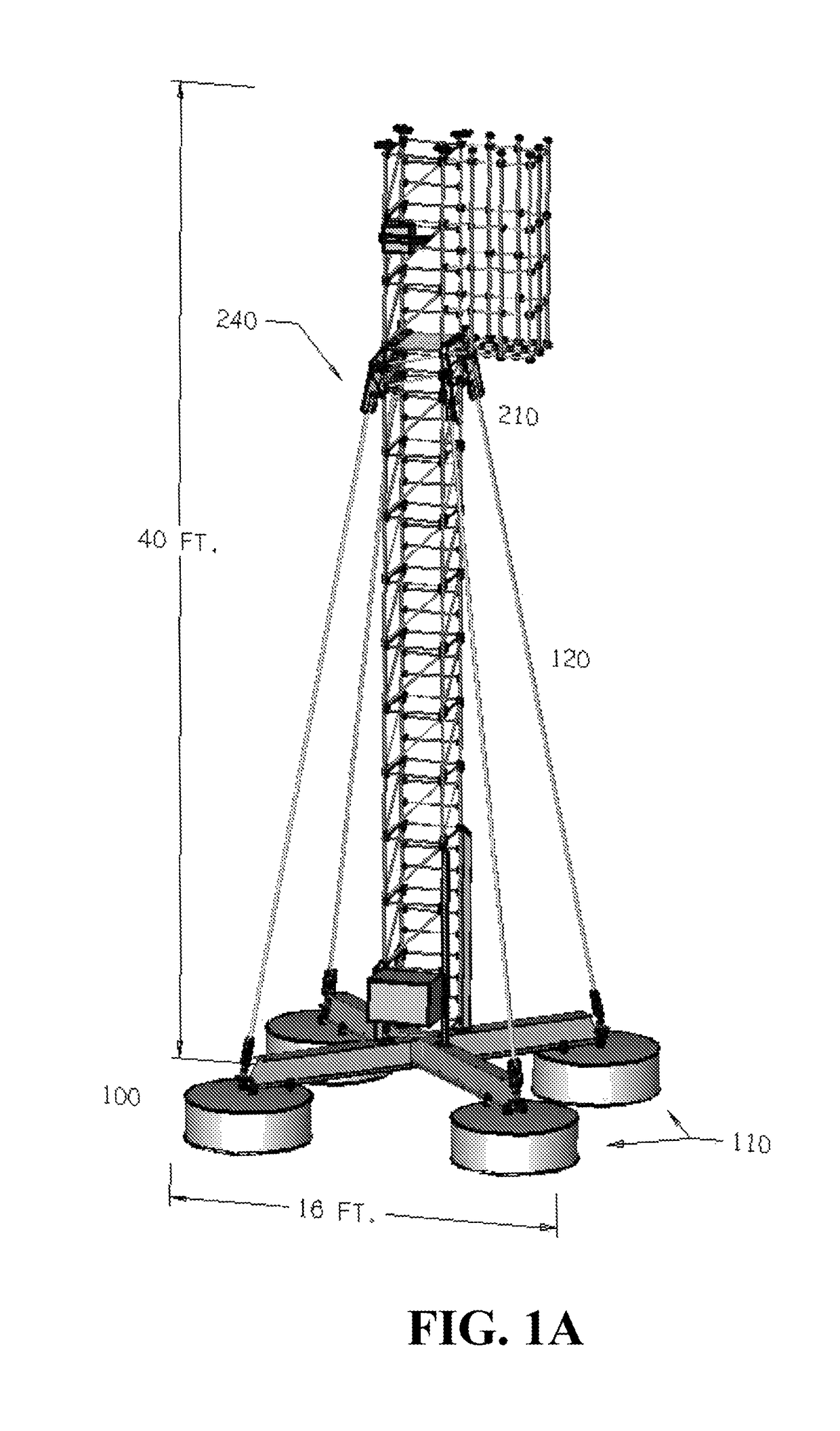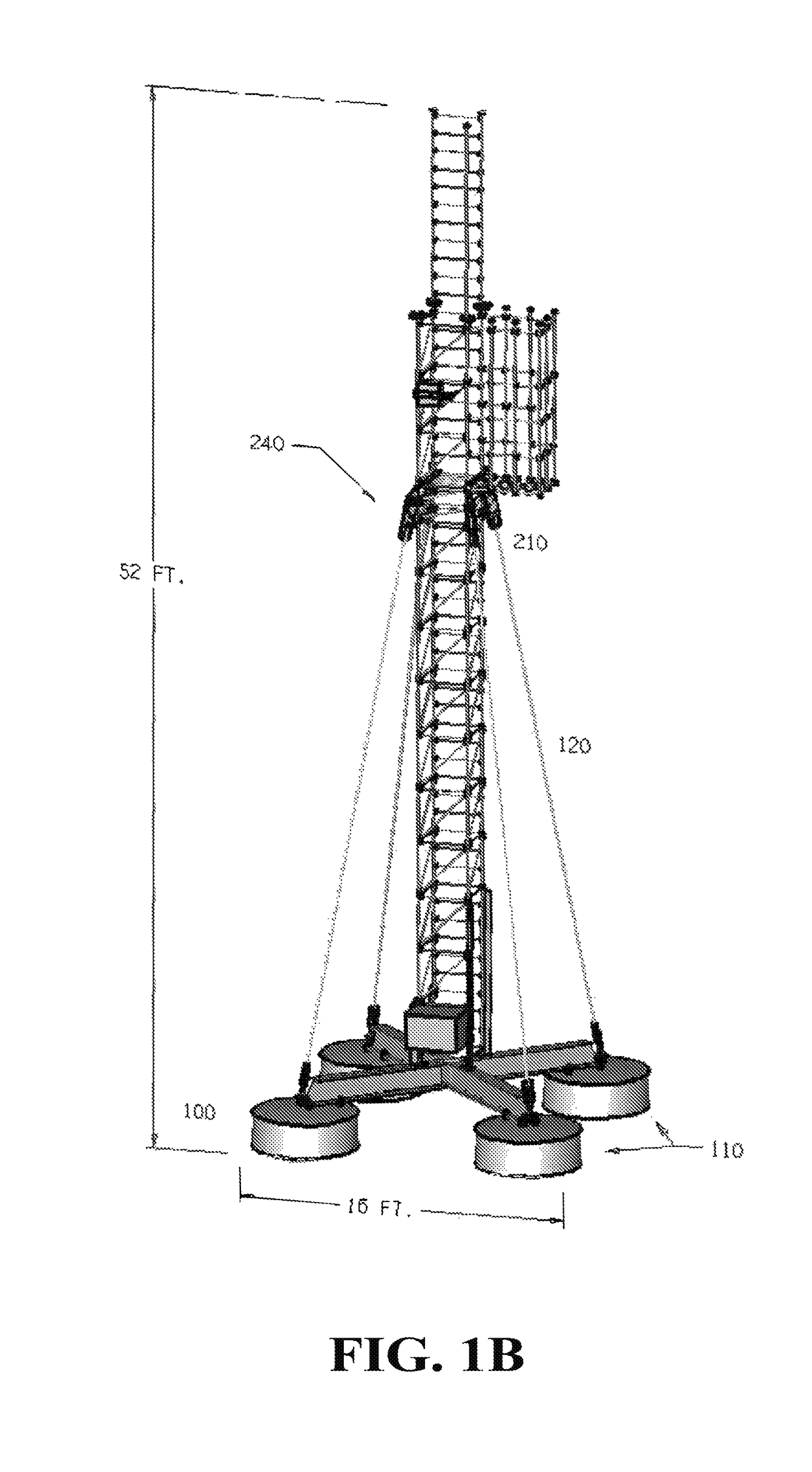Systems and methods for self-standing, self-supporting, rapid-deployment, movable communications towers
a technology of self-supporting, movable communications towers, applied in the direction of towers, antennas, buildings, etc., can solve the problems of inconvenient placement of communications towers on private property, large foundation and ground work, and inconvenient construction, so as to reduce the need for building permits, and be flexible
- Summary
- Abstract
- Description
- Claims
- Application Information
AI Technical Summary
Benefits of technology
Problems solved by technology
Method used
Image
Examples
Embodiment Construction
[0036]The ensuing description provides embodiments only, and is not intended to limit the scope, applicability, or configuration of the claims. Rather, the ensuing description will provide those skilled in the art with an enabling description for implementing the embodiments. It should be understood that various changes may be made in the function and arrangement of elements without departing from the spirit and scope of the appended claims.
[0037]As used herein, the term “backhaul” refers to that portion of a telecommunications network that provides an intermediate link between a core or backbone network and an edge subnetwork or user.
[0038]As used herein, the term “ballast base” refers to any base for a tower that includes sufficient ballast or weight, and is held stationary at a sufficient distance from the tower, to provide support to the tower to enable the tower to be self-supporting. A ballast base provides structural support to a tower sufficient to provide a pre-load onto th...
PUM
 Login to View More
Login to View More Abstract
Description
Claims
Application Information
 Login to View More
Login to View More - R&D
- Intellectual Property
- Life Sciences
- Materials
- Tech Scout
- Unparalleled Data Quality
- Higher Quality Content
- 60% Fewer Hallucinations
Browse by: Latest US Patents, China's latest patents, Technical Efficacy Thesaurus, Application Domain, Technology Topic, Popular Technical Reports.
© 2025 PatSnap. All rights reserved.Legal|Privacy policy|Modern Slavery Act Transparency Statement|Sitemap|About US| Contact US: help@patsnap.com



